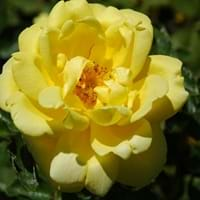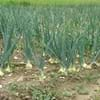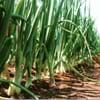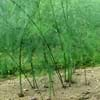Life Span
Perennial
Perennial
Type
Perennial
Bulb or Corm or Tuber
Origin
Hybrid origin
Mediterranean, Southeastern Asia
Types
Not Available
Not available
Habitat
gardens, Pastures, Prairies, Terrestrial, Tropical regions
Fields, Open areas, Terrestrial
USDA Hardiness Zone
3-8
Not Available
AHS Heat Zone
10-1
Not Available
Sunset Zone
1a, 1b, 2a, 2b, 3a, 3b, 4, 5, 6, 7, 8, 9, 10, 11, 12, 13, 14, 15, 16, 17, 18, 19, 20, 21, 22, 23, 24
21,22
Habit
Oval or Rounded
Clump-Forming
Minimum Height
Not Available
Minimum Width
Not Available
Flower Color
Not Available
White, Yellow, Blue, Purple, Pink, Olive, Blue Violet
Flower Color Modifier
Not Available
Bicolor
Fruit Color
Non Fruiting Plant
Brown, Black
Leaf Color in Spring
Not Available
Not Available
Leaf Color in Summer
Not Available
Light Green
Leaf Color in Fall
Not Available
Several shades of Green
Leaf Color in Winter
Light Green
Light Green
Leaf Shape
Pinnate
Narrow
Plant Season
Summer, Fall
Not Available
Sunlight
Full Sun, Partial Sun
Full Sun, Partial Sun
Growth Rate
Fast
Not Available
Type of Soil
Loam, Sand
Not Available
The pH of Soil
Acidic, Neutral
Not Available
Soil Drainage
Well drained
Well drained
Bloom Time
Early Summer, Summer, Late Summer, Early Fall
Not Available
Tolerances
Drought
Drought
Where to Plant?
Ground, Pot
Container, Ground, Pot
How to Plant?
Grafting, Stem Planting, Transplanting
From bulbs, From Rhizomes, Seedlings
Plant Maintenance
Medium
Medium
Watering Requirements
Form a Soil ring to water efficiently, Requires regular watering, Water twice a day in the initial period, Water when soil is dry
Get enough water whenever the soil is dry, Keep the ground moist but not water-logged, Keep the Soil well drained
In Summer
Lots of watering
Lots of watering
In Spring
Moderate
Moderate
In Winter
Average Water
Average Water
Soil pH
Acidic, Neutral
Not Available
Soil Type
Loam, Sand
Not Available
Soil Drainage Capacity
Well drained
Well drained
Sun Exposure
Full Sun, Partial Sun
Full Sun, Partial Sun
Pruning
Prune if you want to improve plant shape, Remove damaged leaves, Remove dead leaves, Remove deadheads, Shape and thin as needed
Remove damaged leaves, Remove dead branches, Remove dead leaves
Fertilizers
All-Purpose Liquid Fertilizer, organic fertlizers
All-Purpose Liquid Fertilizer
Pests and Diseases
Aphids, Bacterial Diseases, Mites, Slugs
Armored scales, Crown rot, Slugs
Plant Tolerance
Drought
Drought
Flower Petal Number
Not Available
Single
Edible Fruit
Not Available
No
Foliage Texture
Not Available
Medium
Foliage Sheen
Not Available
Glossy
Attracts
Not Available
Bees, Butterflies
Allergy
no allergic reactions
Diarrhea, Itchiness, Skin irritation, Stomach pain, Vomiting
Aesthetic Uses
Beautification, Bouquets
Cottage Garden, Landscape Designing
Beauty Benefits
Not Available
Not Available
Environmental Uses
Air purification
Air purification
Medicinal Uses
No Medicinal Use
Diuretic, Stimulates new cell growth
Part of Plant Used
Flowers
Buds, Flowers
Other Uses
Showy Purposes, Used as Ornamental plant
Traditional medicine, Used for fragrance
Used As Indoor Plant
No
Yes
Used As Outdoor Plant
Yes
Yes
Garden Design
Container, Cutflower, Feature Plant, Foundation, Mixed Border
Container, Cutflower, Mixed Border, Rock Garden / Wall
Botanical Name
ROSA 'Allgold'
MUSCARI
Common Name
Floribunda Rose
Grape Hyacinth
In Hindi
रोजा allgold
अंगूर जलकुंभी
In German
rosa Allgold
Traubenhyazinthen
In French
rosa TousPlaqué
Muscari
In Spanish
rosa allgold
Muscari
In Greek
rosa allgold
grape hyacinth
In Portuguese
rosa allgold
Muscari
In Polish
rosa allgold
Szafirek
In Latin
Rosa allgold
Muscari
Phylum
Not Available
Tracheophyta
Class
Not Available
Magnoliopsida
Order
Rosales
Asparagales
Family
Rosaceae
Asparagaceae
Clade
Angiosperms, Eudicots, Rosids
Angiosperms, Monocots
Tribe
Not Available
Not Available
Subfamily
Rosoideae
Scilloideae
Importance of Floribunda Rose and Grape Hyacinth
Want to have the most appropriate plant for your garden? You might want to know the importance of Floribunda Rose and Grape Hyacinth. Basically, these two plants vary in many aspects. Compare Floribunda Rose and Grape Hyacinth as they differ in many characteristics such as their life, care, benefits, facts, etc. Every gardener must at least have the slightest clue about the plants he wants to plant in his garden. Compare their benefits, which differ in many ways like facts and uses. The medicinal use of Floribunda Rose is No Medicinal Use whereas of Grape Hyacinth is Diuretic and Stimulates new cell growth. Floribunda Rose has beauty benefits as follows: Not Available while Grape Hyacinth has beauty benefits as follows: Not Available.
Compare Facts of Floribunda Rose vs Grape Hyacinth
How to choose the best garden plant for your garden depending upon its facts? Here garden plant comparison will help you to solve this query. Compare the facts of Floribunda Rose vs Grape Hyacinth and know which one to choose. As garden plants have benefits and other uses, allergy is also a major drawback of plants for some people. Allergic reactions of Floribunda Rose are no allergic reactions whereas of Grape Hyacinth have Diarrhea, Itchiness, Skin irritation, Stomach pain and Vomiting respectively. Having a fruit bearing plant in your garden can be a plus point of your garden. Floribunda Rose has showy fruits and Grape Hyacinth has no showy fruits. Also Floribunda Rose is not flowering and Grape Hyacinth is not flowering . You can compare Floribunda Rose and Grape Hyacinth facts and facts of other plants too.





